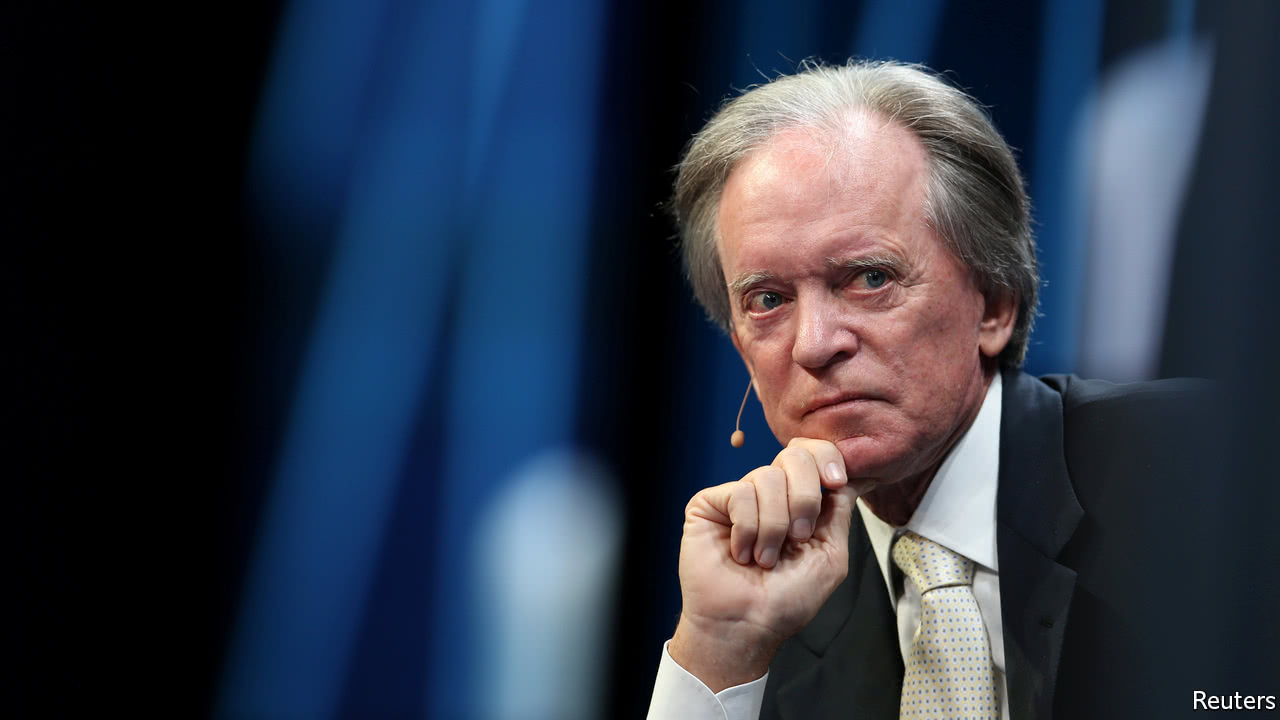
INVESTORS are dragging their attention away from the stockmarket for a moment to figure out what is going on in the other main part of their portfolios: government bonds. Yields have been rising so far this year and Bill Gross, one of the sector’s gurus, has said the long bull market (which dates back to the early 1980s) is finally over.
This certainly seems to be the month for big calls; the noted equity bear Jeremy Grantham has already pointed to the potential for a “melt-up” in the stockmarket. Mr Gross, who runs money for Janus but made his name at Pimco, said that the 25-year trend lines had been broken for both the five- and ten-year bonds.
-
Predicting doom for the bond market
-
Why relations between Slovenia and Croatia are all at sea
-
Investment banks’ cull of company analysts brings dangers
-
Measuring the Trump bump
-
“The Vagina Monologues”, 20 years on
-
An unusual priest’s call for liberty
The end of the bond bull market has been called many times, dating back at least to September 2011. There is something profoundly unsatisfying about bond yields of 2% or so; they seem to offer a dismal reward. An old saying about British investors is that “John Bull will stand anything but not 2%”. Mr Gross’s pessimism about government bonds is widely shared; a net 83% of fund managers polled by Bank of America Merrill Lynch think bonds are overvalued while a net 59% are underweight the asset class.
Such widespread pessimism is normally a contrarian indicator. If everyone is already underweight, who is there left to sell? But the bond market has changed a lot since the financial crisis; the massive expansion of central bank balance sheets via quantitative easing (QE) has altered the balance of supply and demand. Central banks intervened to drive down bond yields and they duly fell. It is hard to be precise about how much the fall in yields was down to central bank actions. Low inflation and pessimism about the prospects for long-term economic growth (the secular stagnation debate) played a big part; of course, those factors also explain why central banks were intervening.
Many people have long feared what would happen when central banks started to unwind their bond purchases, which total trillions of dollars. Those worries help explain why the central banks have been so cautious about policy changes. Back in 2013, the Federal Reserve started to reduce its bond buying, an episode known as the “taper tantrum” which eventually pushed ten-year bond yields to 3%; for context, they are now 2.58%. But even through the Fed eventually stopped buying, the European Central Bank and the Bank of Japan were still willing purchasers.
One reason for the bond sell-off now is worries about what those two central banks might do. The ECB has cut its monthly bond purchases from €60bn to €30bn, and as the euro zone economy strengthens, might be tempted to stop altogether in September. The Bank of Japan has this week cut the size of its bond-buying, although it is not clear yet whether this is a permanent shift of policy. An extra layer of worry is that China may be slowing its purchases of US Treasury bonds; these are bought not for QE purposes but because China has to do something with its foreign exchange reserves. (It is scarcely surprising that the Chinese might be worried about investing so much of their wealth in low-yielding assets in a currency they can’t control and backing a government run by the unpredictable President Trump.)
There is a clear link between these concerns and the optimism about the global economy that is driving stockmarkets higher. In a faster-growing economy, investors would rather own equities than bonds; furthermore, a faster-growing economy has less need for government support. The optimistic view is that this could be a relay race in which central banks are finally able to hand over the baton for growth-supporting policies to governments (ie, the Trump tax cuts) and the corporate sector.
All this creates a good case for sending bond yields a bit higher. But for them to go a lot higher requires the return of inflation which is still hard to spot (see last post). Nor do investors seem to expect it any time soon. The St Louis Fed monitors expectations for inflation five years out; the forecast is currently 2.13%. That is below its level of April last year and well below expectations back in 2013 and 2014.
It is worth recalling that, only a few weeks ago, some commentators worried that a flattening yield curve (short-term rates closing the gap with long-term yields) was a sign of a slowing economy. And the markets are littered with the failed careers of those who bet that ultra-low Japanese bond yields would not last; a trade known as “the widowmaker”. Ten-year Japanese yields are 0.08%.
Another way of looking at the ten-year bond yields is to see it as the summary of expectations for the future trend in short rates. Do you really believe that the Fed can push short rates up to 3% and beyond? That is putting rather a lot of trust in the Trump programme. Fourth quarter growth may have been an annualised 2.7% which is not bad. But with the oil price rising, the Fed stepping on the brakes and the labour market getting tighter, how long can this carry on?
It is one thing to say that bond yields may be heading to the top of their recent range. That is a long way from “bondmageddon”.
Source: economist
Predicting doom for the bond market